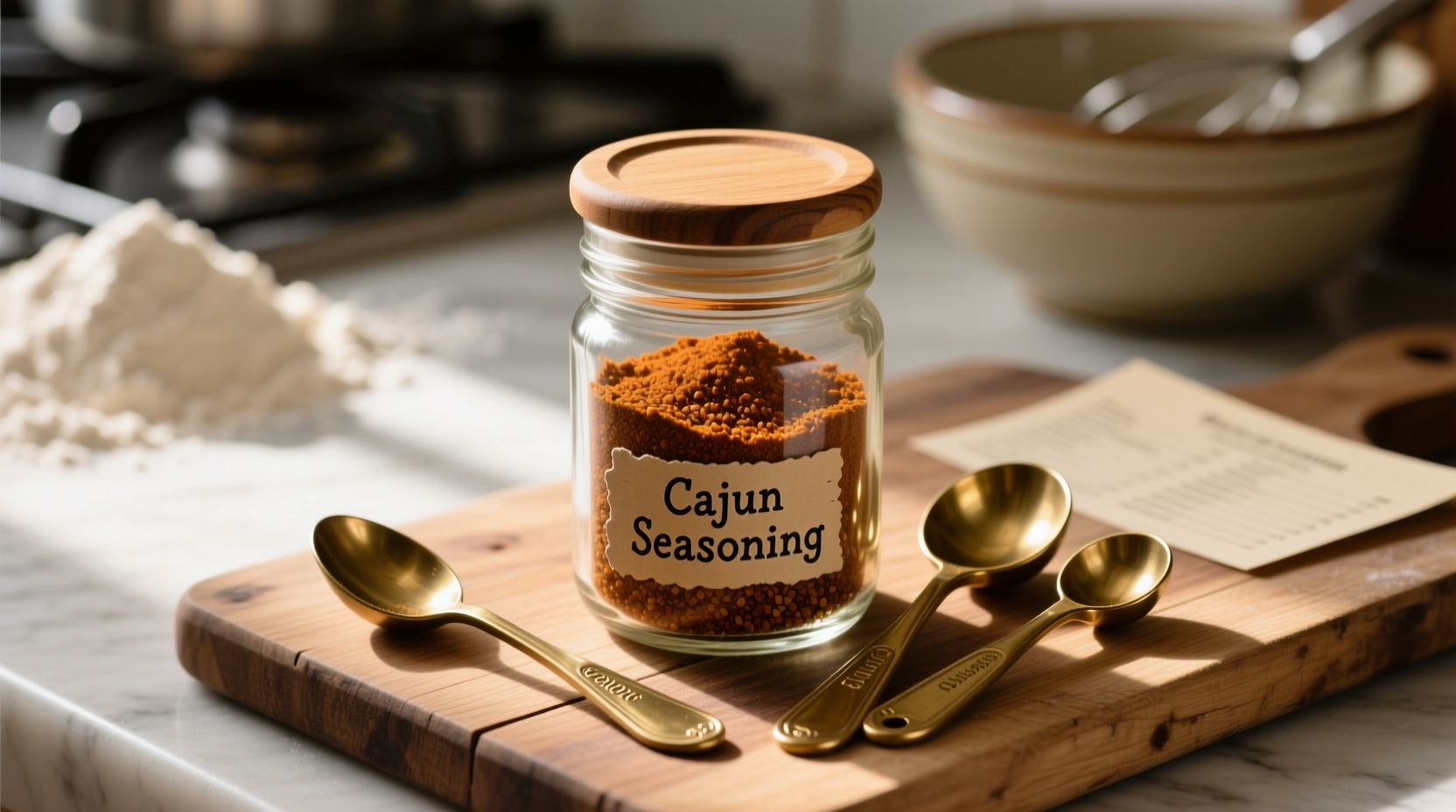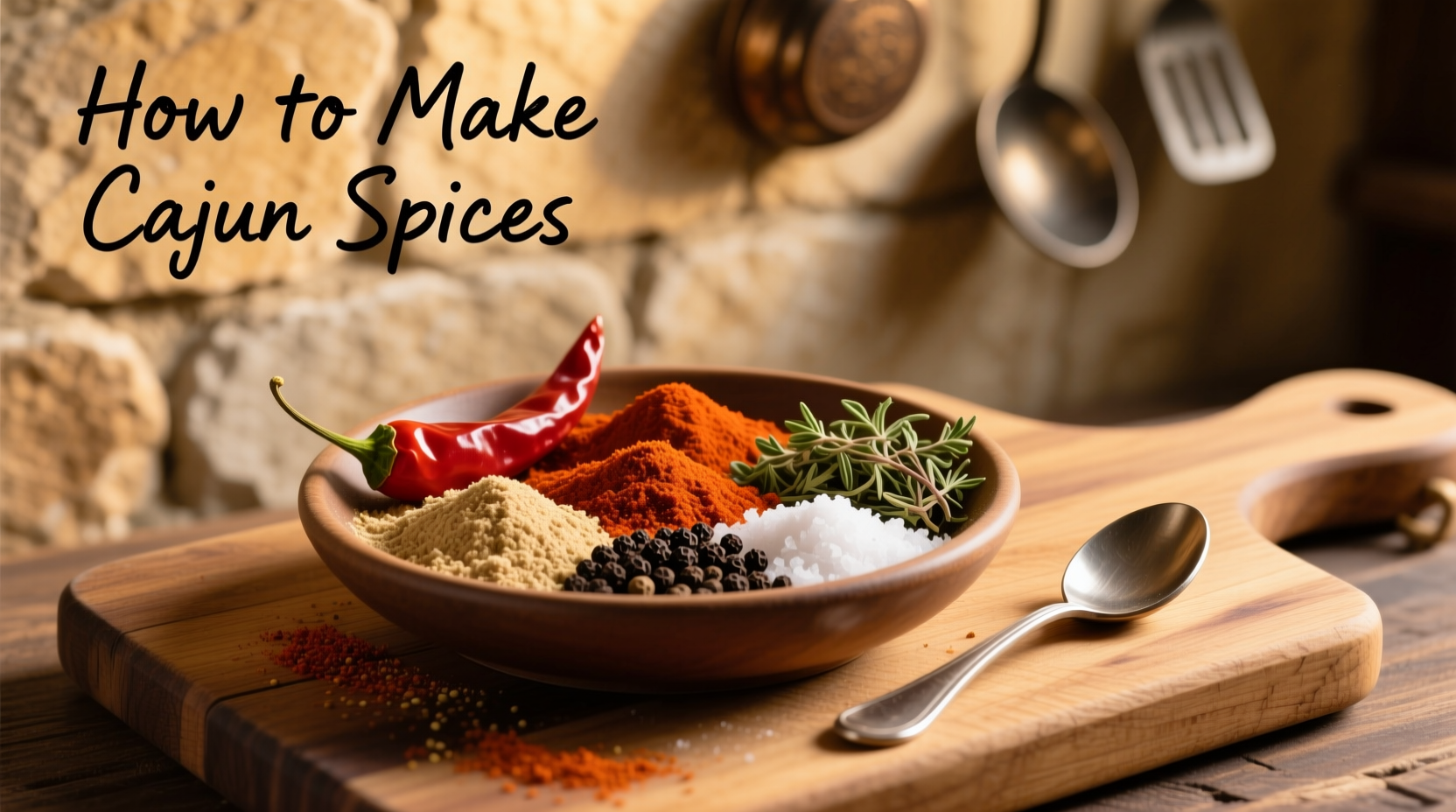Create Perfect Homemade Cajun Seasoning in 15 Minutes
Forget store-bought blends filled with fillers and excessive salt. Crafting your own Cajun spice blend unlocks authentic Louisiana flavors while giving you complete control over ingredients and heat level. This guide delivers the precise ratios used by generations of Louisiana cooks, plus professional tips for maximizing flavor that most recipes miss.
Why Homemade Cajun Seasoning Beats Store-Bought Every Time
Commercial blends often contain anti-caking agents, excessive salt, and inconsistent spice ratios that mask true Cajun flavor. When you make your own:
- You control the heat level by adjusting cayenne amounts
- Avoid unnecessary additives and preservatives
- Tailor the blend to specific dishes (seafood, poultry, vegetables)
- Enjoy fresher, more vibrant flavors from recently combined spices
Essential Ingredients for Authentic Cajun Spice
The magic of Cajun seasoning comes from the specific combination and ratio of these seven core spices. Quality matters—use fresh, high-grade spices for best results.
| Spice | Role in Blend | Quality Tip |
|---|---|---|
| Paprika | Base flavor and color | Use Hungarian sweet paprika for authentic depth |
| Cayenne pepper | Primary heat source | Freshness critical—stale cayenne loses potency |
| Garlic powder | Savory backbone | Avoid garlic salt to control sodium levels |
| Onion powder | Sweet complexity | Dehydrated not caramelized for authentic profile |
Step-by-Step: Crafting Your Cajun Spice Blend
Follow these professional techniques to maximize flavor development in your homemade blend.
1. Measure Ingredients Precisely
Accuracy matters—use proper measuring spoons, not approximations. For one standard batch:
- 2 tablespoons paprika (Hungarian sweet preferred)
- 1 tablespoon garlic powder
- 1 tablespoon onion powder
- 1 tablespoon cayenne pepper (adjust to taste)
- 1 tablespoon dried oregano
- 1 tablespoon dried thyme
- 2 tablespoons freshly ground black pepper
2. Toast Whole Spices First (Professional Technique)
For even deeper flavor, toast whole peppercorns, bay leaves, and dried thyme before grinding:
- Heat dry skillet over medium-low heat
- Add whole black peppercorns and toast 2-3 minutes until fragrant
- Grind cooled peppercorns to fine powder
- Repeat with dried thyme leaves (remove from stems first)
3. Combine and Store Properly
Mix all ingredients thoroughly in a glass bowl, then transfer to an airtight container. Proper storage maintains potency:
- Use dark glass jar with tight-sealing lid
- Store in cool, dark place away from heat sources
- Maximum freshness: 3-4 months (vs. 6 months for single spices)
- Never store above stove where heat degrades flavor compounds

Understanding Cajun vs. Creole Seasoning: Historical Context
Many confuse these Louisiana staples, but their origins and flavor profiles differ significantly. According to Louisiana State University's Center for Cultural and Eco-Tourism, the distinction emerged from historical settlement patterns:
| Characteristic | Cajun Seasoning | Creole Seasoning |
|---|---|---|
| Origin | Rural Acadiana (country cooking) | New Orleans (city cooking) |
| Primary Heat Source | Cayenne pepper | Black pepper with mild paprika |
| Tomato Products | Rarely used | Common (defining Creole difference) |
| Salt Content | Traditionally low (added during cooking) | Often includes salt |
Cajun Spice Evolution Timeline
The development of authentic Cajun seasoning reflects Louisiana's complex cultural history. Research from the University of Louisiana at Lafayette's Center for Louisiana Studies documents this progression:
| Era | Key Developments | Spice Profile Characteristics |
|---|---|---|
| 1755-1800 | Acadian expulsion from Canada to Louisiana | Relied on wild herbs, limited commercial spices |
| 1800-1860 | Adoption of local ingredients (filé, peppers) | Increased use of native heat sources, minimal paprika |
| 1860-1940 | Commercial spice availability increases | Standardization of paprika-based blends emerges |
| 1940-Present | Commercialization and national popularity | Modern balance of heat, garlic, and herbal notes |
Perfect Usage Guidelines for Authentic Results
Professional chefs know that how you use Cajun seasoning matters as much as the blend itself. Follow these application techniques for restaurant-quality results:
Meat and Seafood Preparation
- Poultry: Rub 1-2 teaspoons per pound under skin and on surface 2 hours before cooking
- Seafood: Use lighter application (½ teaspoon per pound)—Cajun spices overpower delicate fish
- Red meat: Combine with garlic paste for deeper penetration into muscle fibers
Avoid Common Flavor-Killing Mistakes
Based on culinary research from the Culinary Institute of America, these errors ruin otherwise good Cajun seasoning:
- Burning the spices: Never add dry spice blend to smoking-hot oil—heat oil to medium first
- Over-salting: Traditional Cajun cooking adds salt separately during cooking
- Using stale spices: Test potency by rubbing between fingers—if aroma is weak, replace
- Incorrect storage: Light and heat degrade volatile flavor compounds within weeks
Customizing Your Blend for Specific Dishes
The beauty of homemade Cajun seasoning is customization. Adjust these elements based on your dish:
Heat Level Adjustments
- Mild version: Reduce cayenne to 2 teaspoons, add 1 teaspoon white pepper
- Extra heat: Add ½ teaspoon ground chipotle for smoky heat dimension
- Kid-friendly: Replace cayenne with additional paprika and ½ teaspoon celery seed
Dish-Specific Variations
- For seafood boils: Add 1 teaspoon dried dill and ½ teaspoon ground coriander
- For chicken dishes: Increase thyme to 1½ tablespoons, add ½ teaspoon sage
- For vegetarian applications: Boost garlic powder to 1½ tablespoons for umami depth
Troubleshooting Common Cajun Seasoning Problems
Even experienced cooks encounter issues with spice blends. Here's how to fix them:
If Your Blend Tastes Bitter
Cause: Over-toasted spices or stale paprika. Solution: Add ¼ teaspoon sugar to balance bitterness without altering authentic profile.
If Flavor Lacks Complexity
Cause: Imprecise measurements or low-quality ingredients. Solution: Add ½ teaspoon celery seed and ¼ teaspoon allspice for layered flavor without changing Cajun character.
If Heat Overwhelms Other Flavors
Cause: Inconsistent cayenne potency. Solution: For future batches, test cayenne heat by mixing ¼ teaspoon with 2 tablespoons oil—adjust amounts accordingly.
Preserving Authentic Cajun Flavor
True Cajun seasoning celebrates Louisiana's cultural heritage. As documented by the Smithsonian Center for Folklife and Cultural Heritage, authentic blends avoid:
- MSG and artificial flavor enhancers
- Excessive salt (added during cooking instead)
- Fillers like cornstarch or flour
- Non-traditional ingredients like turmeric or curry powder
By making your own blend, you honor the Acadian tradition of resourceful cooking while creating flavors that match your personal taste preferences.











 浙公网安备
33010002000092号
浙公网安备
33010002000092号 浙B2-20120091-4
浙B2-20120091-4